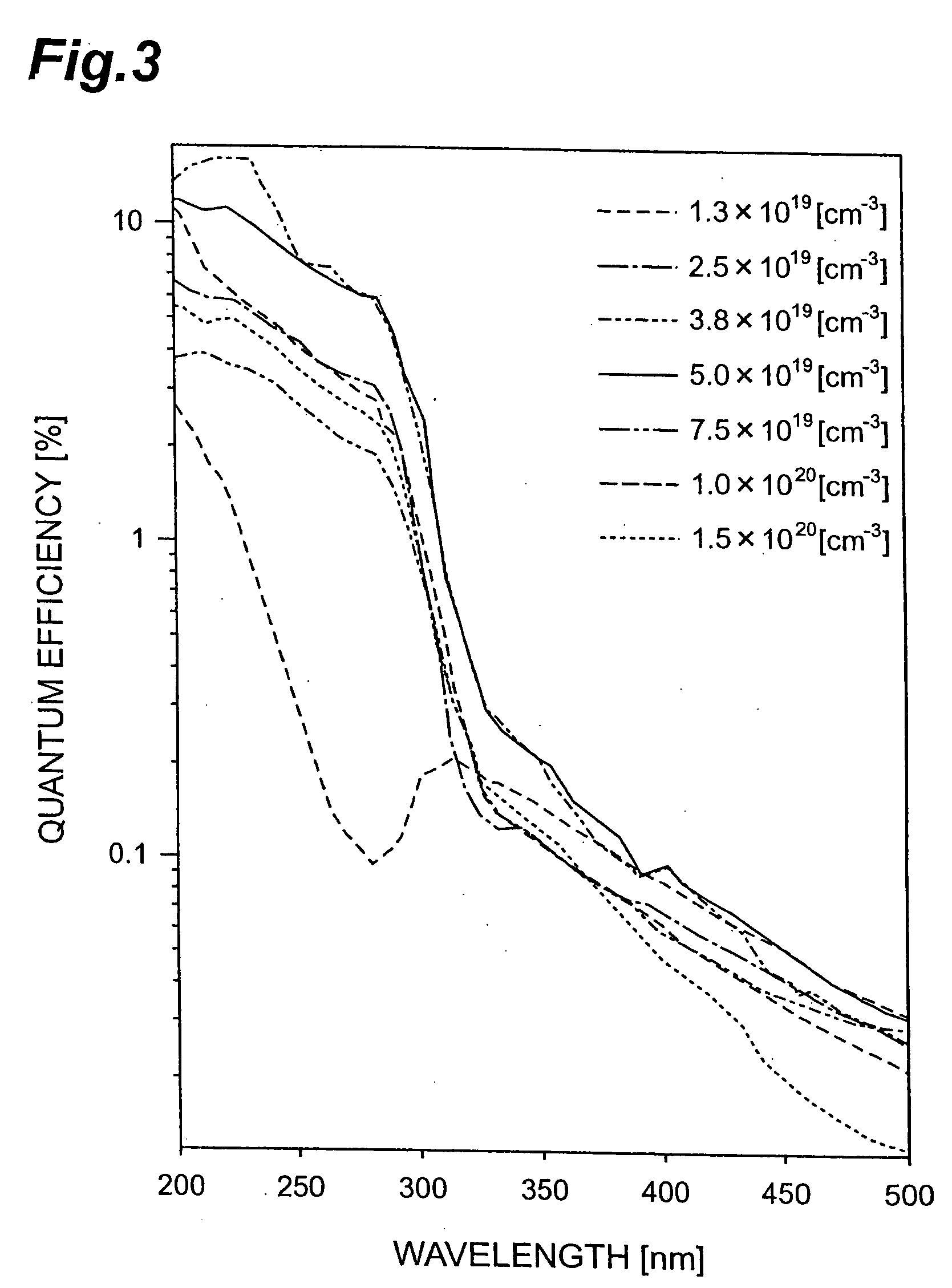Photocathode having A1GaN layer with specified Mg content concentration
a photocathode and content concentration technology, applied in the field of semiconductor photocathodes, can solve the problem that the quantum efficiency of conventional semiconductor cathodes cannot be described as sufficient, and achieve the effect of high quantum efficiency and high quantum efficiency
- Summary
- Abstract
- Description
- Claims
- Application Information
AI Technical Summary
Benefits of technology
Problems solved by technology
Method used
Image
Examples
first embodiment
[0019]FIG. 1 is a drawing showing the structure of a reflection-type semiconductor photocathode of a first embodiment, employing an AlxGa1-xN layer (0≦x≦1) as an optical absorption layer. FIG. 2 is a schematic diagram showing schematically a measurement method to measure the photoelectric characteristics of the semiconductor photocathode of FIG. 1. FIG. 3 is a characteristic diagram showing the wavelength dependence of the quantum efficiency of the semiconductor photocathode of FIG. 1. FIG. 4 is a characteristic diagram showing the Mg concentration dependence of the quantum efficiency, for light at a wavelength of 280 nm, of the semiconductor photocathode of FIG. 1. FIG. 5 is a characteristic diagram showing the Mg concentration dependence of the ratio RS / L of the quantum efficiency for light at a wavelength of 280 nm to the quantum efficiency for light at a wavelength of 200 nm, for the reflection-type semiconductor photocathode of FIG. 1.
[0020] As shown in FIG. 1, in the reflectio...
second embodiment
[0074]FIG. 7 is a characteristic diagram showing the wavelength dependence of the quantum efficiency of the transmission-type semiconductor photocathode 11 of the FIG. 7 compares the wavelength dependences of a plurality of semiconductor photocathodes, with the same configuration but with different Mg concentrations in the optical absorption layer 4. Except for the different amounts of Cp2Mg supplied, the plurality of semiconductor photocathodes 11 were fabricated by the same method described above.
[0075] As is clear from FIG. 7, at wavelengths of approximately 300 nm or below the semiconductor photocathode 11 of the second embodiment (with an Mg concentration in the optical absorption layer 4 of 5×1019 cm−3) exhibits a quantum efficiency of 2 to 4%, and exhibits satisfactory solar-blind characteristics. For light in the 200 to 280 nm wavelength range, the quantum efficiency was particularly high at approximately 4.1%.
[0076] From FIG. 7, it is seen that the quantum efficiency depe...
PUM
 Login to View More
Login to View More Abstract
Description
Claims
Application Information
 Login to View More
Login to View More - R&D
- Intellectual Property
- Life Sciences
- Materials
- Tech Scout
- Unparalleled Data Quality
- Higher Quality Content
- 60% Fewer Hallucinations
Browse by: Latest US Patents, China's latest patents, Technical Efficacy Thesaurus, Application Domain, Technology Topic, Popular Technical Reports.
© 2025 PatSnap. All rights reserved.Legal|Privacy policy|Modern Slavery Act Transparency Statement|Sitemap|About US| Contact US: help@patsnap.com



